NASA art: 50 years of exploration
DOI: 10.1063/PT.3.1218
The spring of 1962 was a heady time for the men and women of the National Aeronautics and Space Administration. They had just sent the first American into orbit and were busy with plans to meet President John F. Kennedy’s goal of sending human beings to the Moon and returning them safely home by the end of the decade. With some noteworthy successes under his belt, and with the prospect of an even brighter future, NASA administrator James Webb paused to consider how his agency could best capture and communicate the excitement, energy, and significance of the US space effort.
He reasoned that while NASA would document every phase of its work with photographs, there would be moments, messages, and meanings that could not be captured on film. On 16 March 1962, Webb sent a memo to his staff suggesting that they consider “just what NASA should do in the field of fine arts to commemorate past historic events, such as [Alan] Shepard’s and [John] Glenn’s flights, as well as future historic events that we know will come to pass.”
John Walker, the director of the National Gallery of Art, applauded the idea and urged NASA to enlist artists who could interpret what would surely “rank among the more important events in the history of mankind.” Artists could “not only . . . record the physical appearance of the strange new world which space technology is creating, but . . . edit, select, and probe for the inner meaning and emotional impact of events which may change the destiny of our race.” Quick action was required, he warned, in order that “the full flavor of the achievement . . . not be lost.” He hoped that “the past held captive” in the artistic results would “prove to future generations that America produced not only scientists and engineers capable of shaping the destiny of our age, but also artists worthy to keep them company.”
James Dean, an artist working for the NASA education office, and H. Lester Cooke, chief curator of paintings for the National Gallery of Art, launched the NASA art program in May 1963, when they dispatched eight artists to cover the flight of Gordon Cooper, the last Mercury astronaut. It was the beginning of a program that would underscore the wisdom of Webb’s decision. For the past half century, selected artists have enjoyed special access to some epic moments and offered their unique perspectives on what they have witnessed.
Over the years Webb’s good idea has produced several thousand works of art that constitute a national treasure. Seventy-two of those treasures are now on view at the National Air and Space Museum in Washington, DC, until 9 October 2011. Curated by staff members of both NASA and the museum, with the cooperation of Dean, the founding director of the NASA art program, the exhibition is produced and managed by the Smithsonian Institution Traveling Exhibition Service. It arrived at the museum in May following a national tour that carried it to nine other museums in eight states. Following its time in Washington, it will go back on the road and make appearances in Las Cruces, New Mexico; Wausau, Wisconsin; and Davenport, Iowa.
The taste of the exhibition offered in these pages gives testimony that the NASA art collection is far greater than the sum of its parts. Bridging the oft-proclaimed gap between science and the arts, it stands as a reminder of the groundbreaking years of the early space age and serves as an inspiration for those who will continue our long journey into the universe.
Thank you, Jim Webb!

G First Steps, by Mitchell Jamieson (1963)After orbiting Earth 22 times, Gordon Cooper steps away from his Mercury spacecraft onto the deck of the recovery ship.
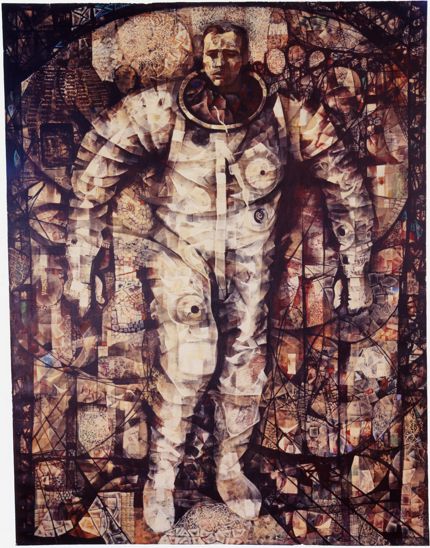

E Gemini Launch Pad, by Jamie Wyeth (1964)
Technicians would use a bicycle to get from the domed, concrete-reinforced blockhouse to the launch pad.
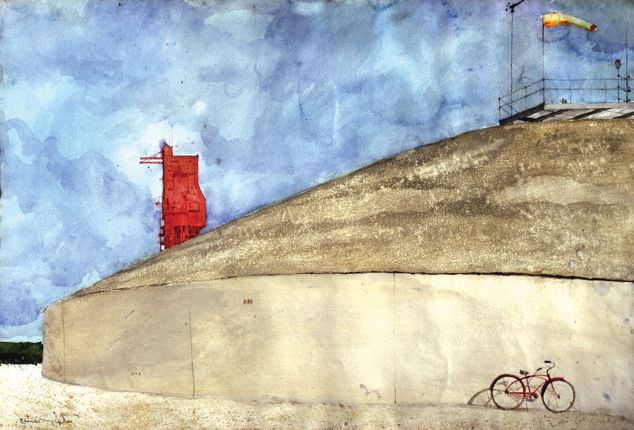

G The Sounds of Engines, by Theodore Hancock (1964)
Saturn 5 rocket engines send noise and shock waves from the test facility in Huntsville, Alabama.
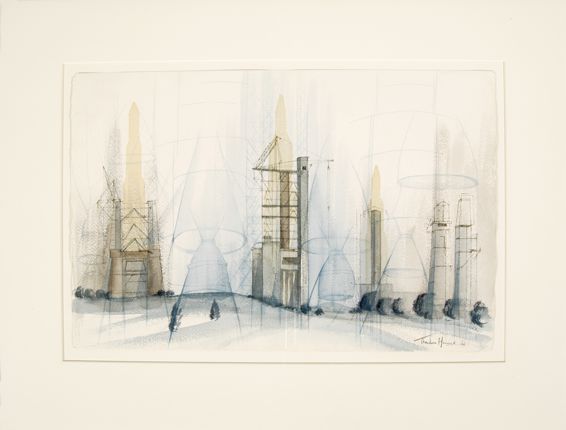

G Ladders, by Mitchell Jamieson (1964)
During a night launch, the gantry on the left is rolled backto reveal a 224-foot-tall Saturn 1B booster.
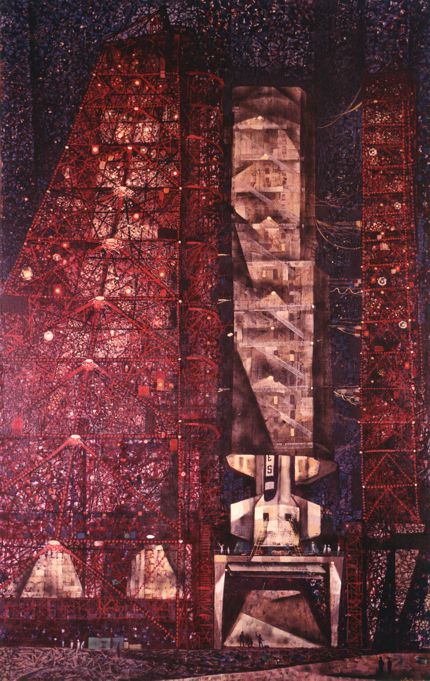

G Crossroads, by Alexander Calder (1967)
In 1967 a launch-pad fire took the lives of Virgil “Gus” Grissom, Edward White, and Roger Chaffee.
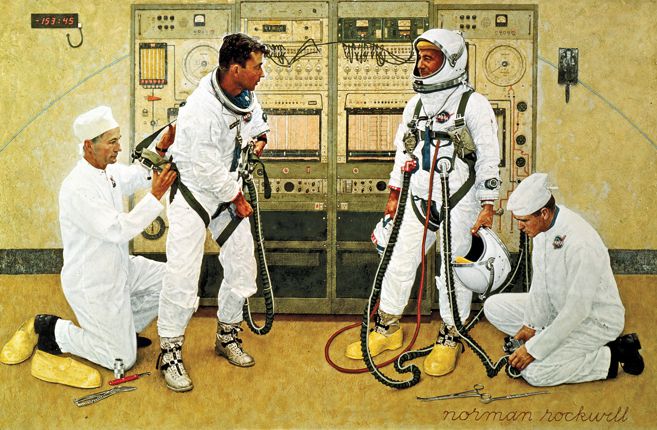

G Grissom and Young, by Norman Rockwell (1965)
Astronauts Virgil “Gus” Grissom and John Young suit up for the inaugural flight of the Gemini program in March 1965.
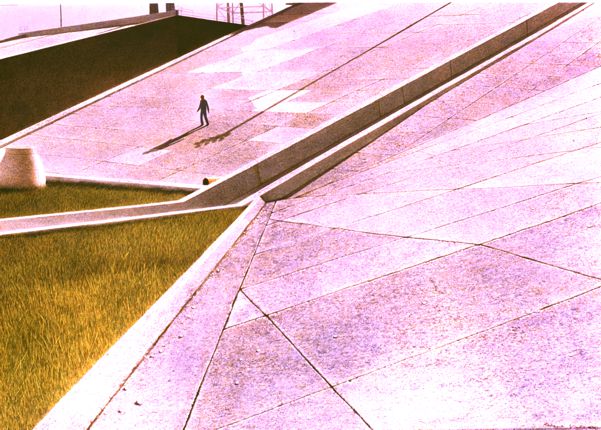

F Points of Perspective, by Robert Vickrey (1969)
A workman looks for blast damage after the liftoff of Apollo 12.
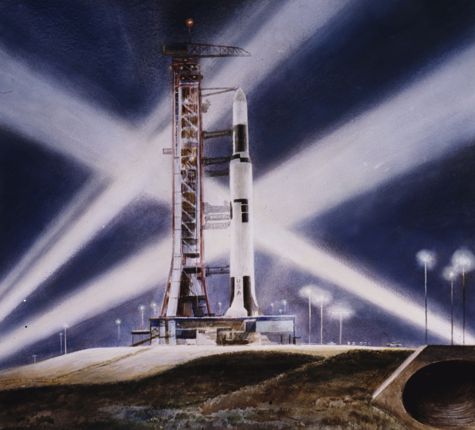

F Liftoff at 15 Seconds, by Jack Perlmutter (1982)
Space shuttle Columbia ascends on its third flight on 22 March 1982.
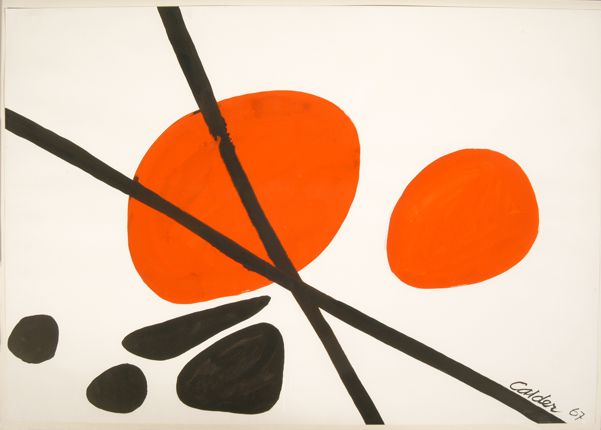

E Skylab, by Peter Hurd (1973)
The modified rocket allowed astronauts to live and work in orbit. Three separate crews arrived at Skylab via Apollo command modules.
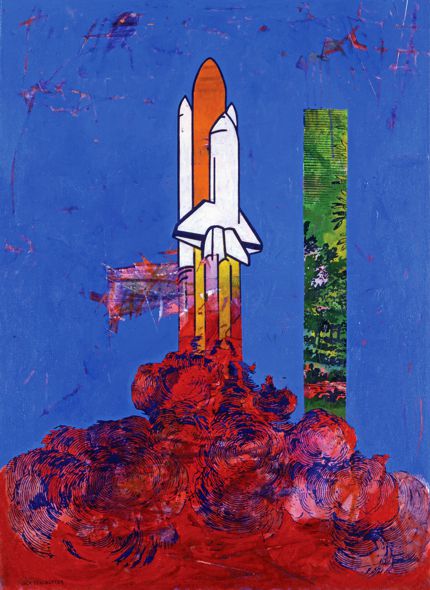

G Apollo 8 Coming Home, by Robert T. McCall (1969)
Human eyes beheld the far side of the Moon for the first time on Christmas Eve 1968.
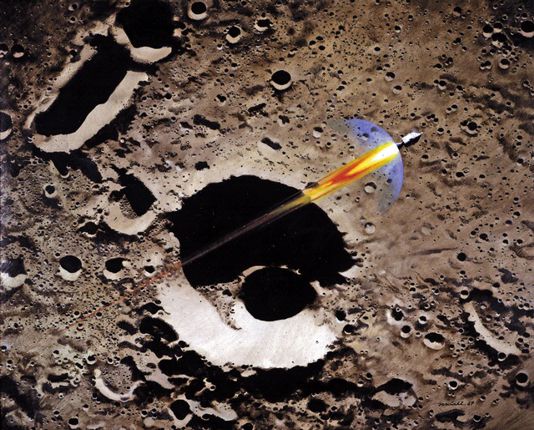

G Sunrise Suit-up, by Martin Hoffman (1988)
A moment of calm presides over the distant launch pad before the frenzy of launch activity.
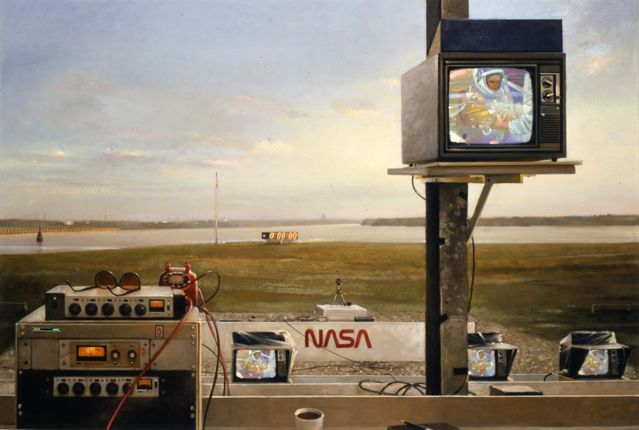

G Fluid Dynamics, by Tina York (1995)
The physical principles of gas movement are depicted in this three-dimensional mixed-media piece.
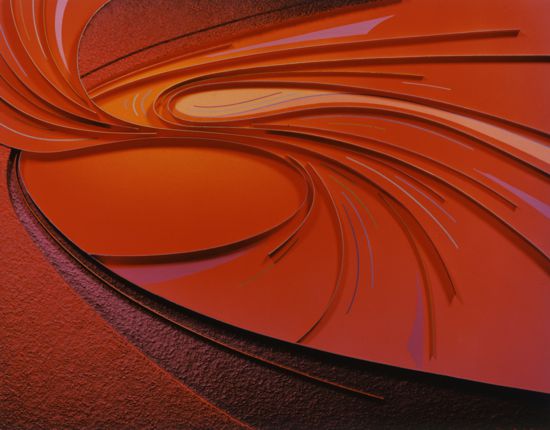

G Chip and Batty Explore Space, by William Wegman (2001)
Posing as astronauts, one Weimaraner peers out of a space station while another conducts a spacewalk.
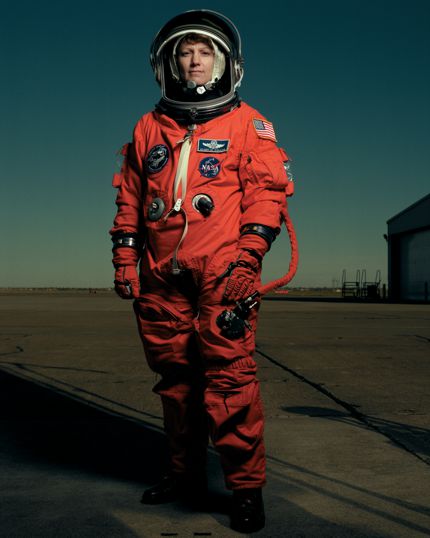

E Eileen Collins, by Annie Leibovitz (1999)
The first female shuttle pilot and shuttle commander trained at the Johnson Space Center.
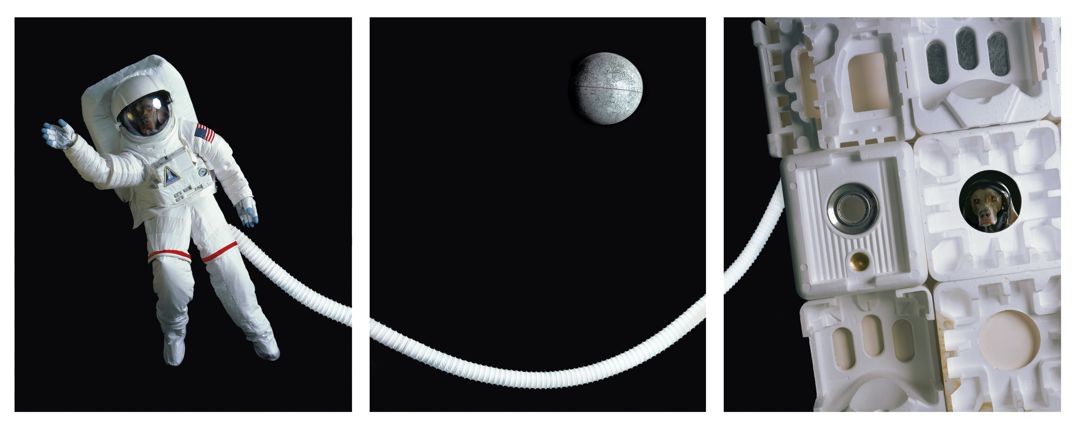

F Indian Science, by Jaune Quick-to-See Smith (2004)
Native American symbolism honors John Bennett Herrington, the first Native American astronaut.
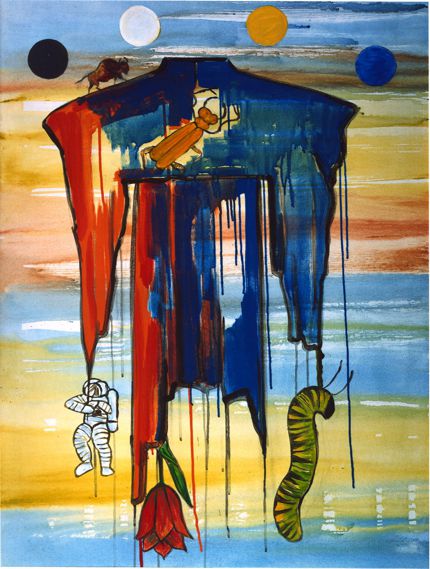

H Remembering Columbia, by Chakaia Booker (2006)
Pieces of a space shuttle’s tire are incorporated into this rubber sculpture commemorating the crew of Columbia, which broke apart during reentry on 1 February 2003.
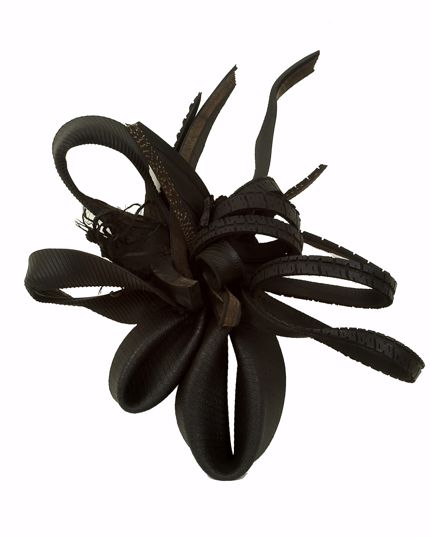

H Titan, by Daniel Zeller (2006)
The intricate surface of Saturn’s moon, recorded by the Cassini spacecraft, inspired this ink drawing.
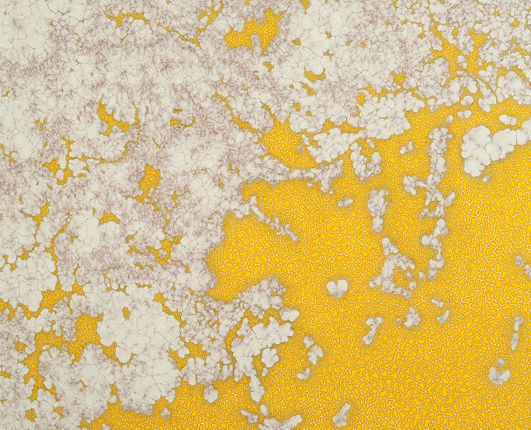
More about the Authors
Tom Crouch is senior curator of aeronautics at the Smithsonian Institution’s National Air and Space Museum in Washington, DC.
